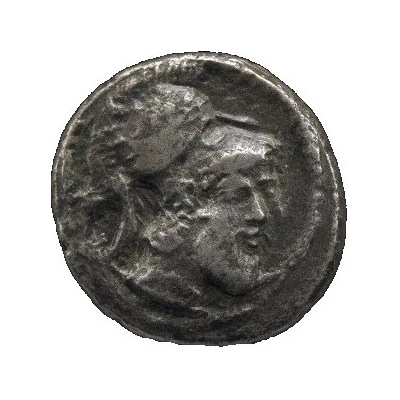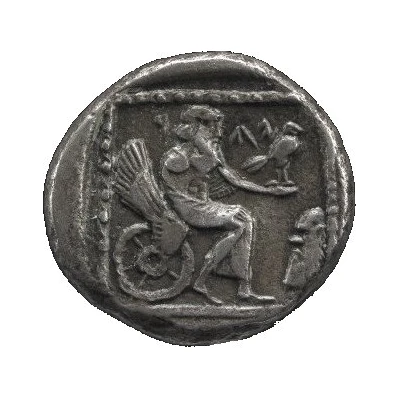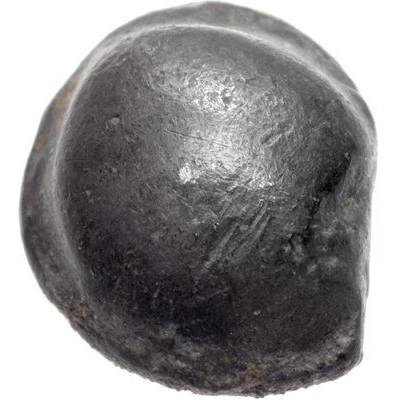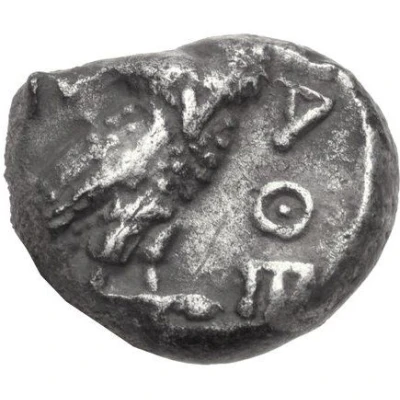


¼ Shekel Judea 539 BC - 332 BC
| Silver | 3.29 g | 15 mm |
| Issuer | Satrapy of Yehud Medinata (Achaemenid Satrapies) |
|---|---|
| Type | Standard circulation coin |
| Years | 539 BC - 332 BC |
| Value | ¼ Shekel |
| Currency | Shekel (539-332 BCE) |
| Composition | Silver |
| Weight | 3.29 g |
| Diameter | 15 mm |
| Shape | Round (irregular) |
| Technique | Hammered |
| Orientation | Medal alignment ↑↑ |
| Demonetized | Yes |
| Updated | 2024-10-10 |
| Numista | N#90465 |
|---|---|
| Rarity index | 100% |
Reverse
Bearded deity seated right on winged wheel (chariot?), holding falcon in left hand and right hand resting on knee, small beaded mask below right; within guilloche border and incuse square
Lettering: יהו
Translation:
YHD or YHW
(Either referring to province of Judah or the name of the God of Israel)
Comment
http://www.britishmuseum.org/research/collection_online/collection_object_details.aspx?objectId=1275502&partId=1&images=true&place=34860&page=3
This was described by Hill and others as the first Jewish coin, with a reverse depiction of the Jewish deity upon a winded chariot as described in Ezekiel 10:16.
Barag identifies the obverse portrait as "Bagoas a general of Artaxerxes III who was strange and commander-in-chief of the Persian army invading Egypt in 343 BCE...In choosing this representation with a large helmet...he continued the precedent set during preparations for the second war against Egypt in 378-374 BCE, namely that a Persian strategos may be represented wearing a Greek helmet." Barag also noticed a parallel between the reverse of this coin "and the coin struck by Pharnabazos in 378-374 BCE showing the enthroned Ba'al Tarz (Ba'al of Tarsus)....One may thus conclude that the deity on the British Museum drachm is the God of Yehud, i.e. the God of Israel.
Gitler and Tal suggest that the coin was a product of the Philistrian mint. They read the legend as YHW or YHR instead of YHD and believe that the production of the coin could have been carried out under Edomite Jews who disregarded the second commandment, or alternatively under gentiles who consider YHWH as yet another deity of their "cultic pantheon." It seems possible that this was among the earliest coins of the Yehud series, and without a local mint at the time, some coins were manufactured in Gaza, and only later in Judah. The two quarter-sheqels described below may also be members of this family. No. 1049 carries a clear legend of YHWD along with a symbol that appears to be the ο mintmark of Gaza.
David Hendin Guide to Biblical Coins Fifth Edition
Interesting fact
One interesting fact about this coin is that it features an image of a lion, which was a symbol of the Achaemenid Empire, on one side, and an inscription in Aramaic on the other side, indicating that it was issued during the period of Persian rule over Judea.

